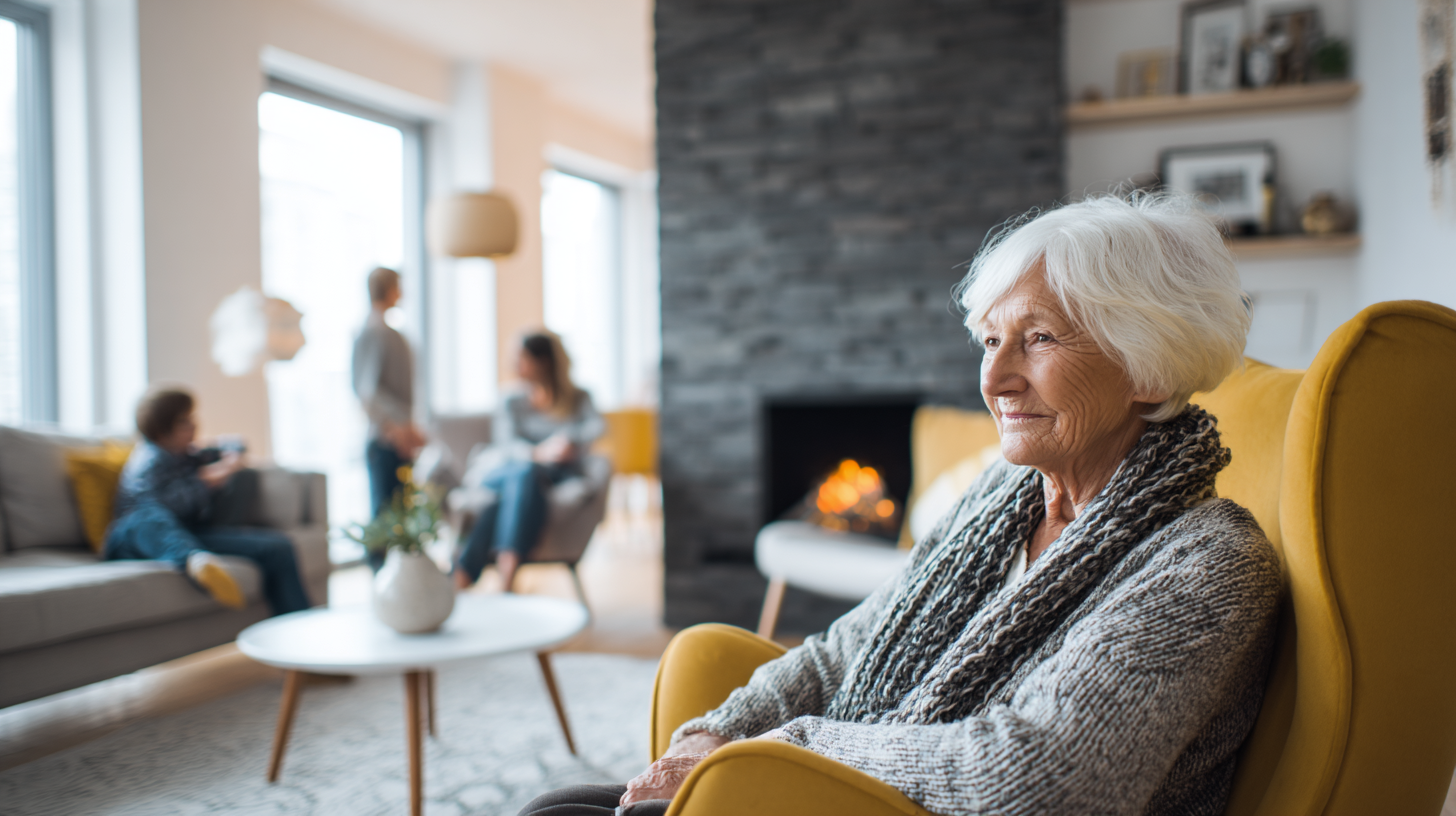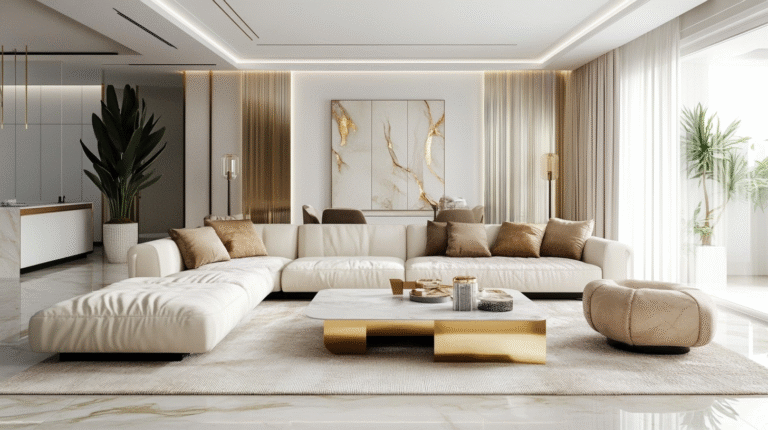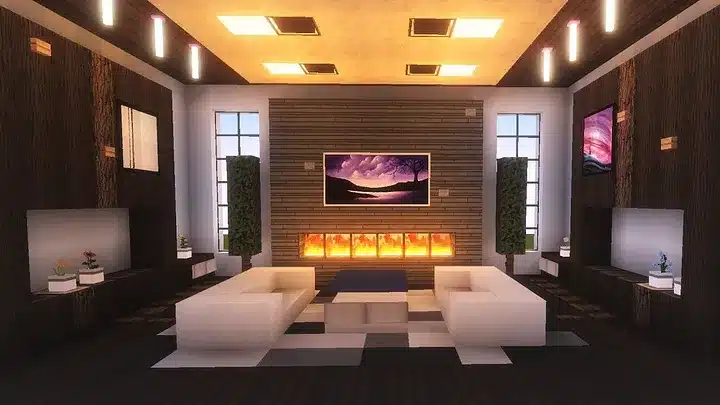Free Shipping On All Orders
Senior Living Interior Design: Transform Your Space for Comfort and Joy

Designing senior living spaces is about much more than looks. It’s about making your home safer, more comfortable, and a place where you feel good every day. Great interior design for senior living combines safety and comfort with a sense of warmth and personal style.
If you are curious about how to make a senior living space both practical and beautiful, you are in the right place. Discover how small changes in design can help you or your loved ones stay independent, boost happiness, and enjoy a welcoming home.
Foundations of Senior Living Interior Design
Designing for senior living means creating environments that feel welcoming, keep you safe, and help you stay independent. Thoughtful choices in layout, furniture, and finishes all have a big impact on your comfort and well-being.
Understanding Seniors’ Needs and Preferences

Your daily comfort depends on how well your space supports your needs. As you age, factors like mobility, vision, and hearing can change. Wide doorways, good lighting, and non-slip floors are essential for easier movement and safety.
Spaces should also feel homey and familiar. Personal touches such as family photos, soft fabrics, and favorite colors make a huge difference. You may also value quiet nooks for reading or social spaces for friends and family.
Safety is always a top priority. Simple changes, like using easy-to-reach storage and lever-style door handles, can remove many daily frustrations. Choosing furniture with arms and sturdy bases can help with standing up and sitting down.
Principles of Aging-In-Place Design

Aging-in-place design lets you live comfortably in your home for as long as possible. Universal design is a key concept here. It means designing spaces that work for everyone, no matter their age or ability.
Some important principles include:
- Step-free entries for easy access
- Wide hallways and doors for wheelchairs or walkers
- Grab bars in bathrooms and showers
- Lever handles for doors and faucets
- Bright and even lighting throughout each room
Kitchens and bathrooms deserve special attention. Lowered counters, pull-out shelves, and non-slip mats make these spaces easier and safer to use. Emergency call buttons or smart sensors are useful additions for both peace of mind and safety.
Current Trends in Senior Living Spaces
Today’s senior living spaces blend functionality with style. Designers focus on open floor plans that make moving around easier. Soft, natural color palettes help create calming spaces.
Many communities add garden areas or indoor plants to boost your mood. Technology is also showing up more, with smart thermostats, automated lights, and devices to assist with medical needs.
There’s a shift towards more personalized rooms where you can display your memories and hobbies. Common spaces now often include areas for group activities, fitness, and hobbies, so you can stay active and social.
Table: Popular Features in Modern Senior Living
| Feature | Benefit |
|---|---|
| Non-slip flooring | Reduces falls |
| Adjustable lighting | Supports vision needs |
| Indoor greenery | Improves air and mood |
| Accessible bathrooms | Supports independence |
Safety and Accessibility in Senior Environments
In senior living spaces, safety and accessibility matter most. Good design can reduce falls, help you move around easily, and support your independence in daily life.
Universal Design for Mobility

Mobility-friendly design helps you get around without barriers. Doorways and hallways should be wider, at least 36 inches, to fit walkers or wheelchairs. Floors should be smooth and level. Ramps with non-slip surfaces offer safer entry instead of stairs. Bathroom grab bars and walk-in showers add support and ease when bathing.
Handles and switches placed lower on the wall make them easier to reach from a seated or standing position. Lever-style door handles are easier to use than round knobs. Open spaces make it simpler to move around with assistive devices. Universal design eliminates steps, tight corners, and high thresholds that can cause trips.
Key features for mobility:
- Wide doorways
- Zero-step entries
- Grab bars
- Lever handles
- Ample open space
Integration of Non-Slip and Non-Reflective Surfaces
Falls are a major risk for seniors, so flooring should help prevent slipping. Choose materials like textured tiles, low-pile carpet, or rubber flooring. Wet areas, such as the bathroom and kitchen, should have strong grip underfoot.
Non-reflective finishes on floors and counters reduce glare, which can confuse or distract you if your vision isn’t as strong as it used to be. Avoid polished stone or glossy tile where possible. Rugs should be low or secured with grips to prevent sliding.
Best flooring types:
| Room | Recommended Surface |
|---|---|
| Bathroom | Textured vinyl or tile |
| Bedroom | Low-pile carpet |
| Kitchen | Rubber or textured tile |
| Hallways | Non-slip wood or vinyl |
Wayfinding and Navigation Solutions
Clear navigation is important if you have memory difficulties or poor eyesight. Color-contrasting walls, doors, and handrails help you recognize changes in space. Large, well-lit signs with easy-to-read letters guide you to key rooms like the restroom, dining area, or exit.
Good lighting along hallways and at entrances reduces shadows that can make you trip. Nightlights in bedrooms and bathrooms also help. Consistent furniture placement keeps walking paths open and prevents bumping into things.
Use pictures, symbols, or simple words on doors and signs. You can also use color coding—like a blue stripe on walls leading to the dining room—to make paths clear.
Enhancing Comfort and Well-Being
Design choices in your living space matter. The right layout, furniture, and features can help keep you comfortable, safe, and relaxed every day. Simple updates can also make it easier for you to enjoy time with friends and family.
Creating Relaxing and Inviting Spaces

A relaxing living space starts with calming colors and plenty of natural light. Soft blues and gentle greens work well, helping you feel at ease and reducing daily stress.
Personal touches like family photos and favorite décor add warmth. You may want cozy rugs and soft lighting for a homely feel. Choose wide, clear pathways to improve movement and keep the area uncluttered.
Plants can bring a bit of nature inside and boost your mood. Comfortable seating arranged in small groups encourages conversation. The goal is to make you feel welcome and able to enjoy both quiet moments and visits with others.
Ergonomic Furniture Selection

Pick seats with sturdy arms and firm cushions that are easier to get in and out of. Adjustable chairs and beds can help relieve pressure on your back and joints, making daily activities more comfortable.
Use tables and shelves at a suitable height to prevent bending or reaching. Stable and non-slip furniture makes your space safer. Avoid sharp corners, as rounded edges lower the risk of bumps or injuries.
You may find furniture with simple controls and clear instructions easier to use. Pay attention to seat depth and overall height to match your personal needs. Good ergonomics lower the chance of discomfort or accidents and help you stay independent.
Acoustic Considerations for Peaceful Living

A quiet space reduces stress and supports better sleep. Thick curtains and soft furnishings can help absorb sound, cutting down on background noise.
Door sweeps and weather-stripping seal gaps and prevent outside sounds from getting in. If you have hearing changes, quieter rooms make it easier to hold a conversation or listen to the TV.
Acoustic ceiling tiles or wall panels can soften echoes, especially in common areas. Consider placing noisy appliances farther away from bedrooms and sitting areas. These adjustments help you enjoy a calm, peaceful environment every day.
Color, Lighting, and Materials
Creating a senior living space means thinking carefully about colors, lighting, and the kinds of materials you use. The right choices can make daily life more comfortable, safer, and help make spaces feel relaxing and welcoming for everyone.
Selecting Calming Color Palettes
Color can affect how a room feels and even your mood. Soft pastels, gentle blues, restful greens, and warm neutrals are good choices for creating a calm environment. These shades are less likely to cause eye strain and can help lower stress.
Bright whites can make spaces feel more open, while muted yellows and oranges can bring warmth and happiness to living areas. In activity rooms, adding pops of brighter colors can help stimulate the senses and set areas apart.
For safety, use contrasting colors to highlight edges, doorways, or steps. This makes it easier to see changes in surfaces and avoid falls.
| Color | Best Use | Effect |
|---|---|---|
| Pastels | Bedrooms | Promotes calm and rest |
| Green | Living spaces | Feels natural and fresh |
| Warm Neutrals | Hallways | Adds comfort, easy on eyes |
| Contrasting accents | Door frames | Improves visibility |
Optimal Lighting for Seniors
Good lighting is important to help prevent trips and falls and makes it easier to do daily tasks. Seniors usually need more light, so use plenty of lamps, overhead lights, and natural sunlight if possible.
Install lighting controls that are easy to reach and use, like rocker switches or motion sensors. Avoid strong glare by using covered lights or lamp shades, and add adjustable lighting for activities like reading or hobbies.
Make sure hallways and bathrooms are always well lit, especially at night. Use night lights or illuminated light switches to guide the way in the dark. Mixing natural and artificial light helps create a bright, cheerful setting.
Tips for better lighting:
- Place task lights near chairs and tables for reading.
- Use non-slip, glare-free bulbs.
- Add dimmer switches for more control.
Choosing Durable and Hygienic Materials
Materials in senior living spaces need to be strong, easy to clean, and safe. Pick flooring like slip-resistant vinyl or low-pile carpet to help prevent falls. Avoid rugs that can bunch up or move easily.
Furniture should have smooth edges and be easy to wipe down. Choose fabrics that resist stains and bacteria, such as antimicrobial upholstery and moisture-resistant covers. Tables and chairs with sturdy frames and simple shapes are best.
In kitchens and bathrooms, use non-porous surfaces like quartz or solid surfaces, which resist bacteria and are simple to maintain. Comfortable, easy-to-grip handles and rails help everyone move around safely and confidently.
Personalization and Homelike Atmosphere

Comfort and a sense of belonging are important in senior living spaces. Using familiar items from your life and making choices about how your room looks can make your space feel more welcoming and personal.
Incorporating Familiar Elements
Bringing items from home can help you feel more at ease in a new setting. Photos, favorite chairs, small pieces of art, and keepsakes remind you of happy memories. These objects can help reduce stress and make daily life feel more normal.
Try to place family pictures where you can see them often. Use blankets, pillows, or decorations that you already love. Adding a favorite lamp or wall clock can also make the space feel more familiar.
Familiar scents, like a certain brand of soap or a favorite room spray, can also make you feel comfortable. Paying attention to these details helps create a homelike feeling even in a new environment.
Opportunities for Resident Customization
Your living space should fit your needs and style. Many senior living communities let you choose wall colors, bedding, and how furniture is arranged. You may be able to bring your own curtains, chairs, or small tables to make the room unique.
Some communities offer a menu of décor options, so you can pick patterns and colors you like. You might also have space to hang artwork or display collections. If you use mobility aids, you can ask for changes to make sure your room is safe and easy to move around in.
Small choices make a big difference. Being able to personalize your room helps you feel more in control and at home.
Social Spaces and Community Design

A strong sense of community depends on having inviting areas where people can spend time together. Purposeful indoor and outdoor spaces make it easier for you to be social, active, and comfortable in your everyday life.
Designing Common Areas for Interaction
Common areas are the heart of a senior living community. When these spaces have couches, tables, and good lighting, you feel more welcome. Open seating helps small and large groups feel included. Using calming colors and flexible furniture lets you use the space for games, reading, or family visits.
Well-designed community rooms often add features like coffee bars, libraries, or craft corners. These areas give you reasons to leave your room and meet others. Adding bookshelves in shared spaces, instead of separate rooms, encourages casual interaction. Designers also pay attention to walking space and clear paths, making it easy to move around with walkers or wheelchairs.
A friendly layout can include:
- Wide hallways for safe walking
- Clear sightlines for easy wayfinding
- Lots of natural light to make spaces feel bright
Every detail is chosen to support social activity and comfort.
Creating Outdoor Spaces for Engagement
Outdoor spaces are just as important as indoor ones. Gardens, patios, and walking trails help you enjoy fresh air and sunlight with friends or family. Designers use ramps, smooth pavement, and handrails so everyone can safely use these areas.
Covered seating and shady spots let you spend time outside even on warm days. Garden beds and planters invite you to join group gardening or simply relax with neighbors. Outdoor grills, picnic tables, and even small ponds create places for group meals or quiet talks.
Having safe, well-lit paths encourages daily walks and adds to a sense of independence. The right balance of private nooks and large gathering areas means you can socialize as much or as little as you like. Each feature is aimed at helping you stay connected and engaged in your community.
Technology Integration in Senior Living
Technology plays a big role in making senior living safer and more enjoyable. You can use different devices and systems to help with daily needs and stay connected to family and friends.
Smart Home Features for Safety
Smart home systems give you more control over your living space and help boost safety. For example, voice-controlled lights and thermostats let you adjust settings without getting up. You can turn on lights or change the temperature just by asking.
Automatic door locks and smart sensors are helpful if you sometimes worry about forgetting to lock up or want alerts about movement in certain areas. Some setups include fall detection sensors that notify caregivers if you need help.
Wearable health trackers monitor things like your heart rate or steps and can send real-time updates to family or staff. In case of emergencies, many devices have one-touch or voice-activated alert systems. All these features are designed to give you peace of mind and let you be more independent.
Technology for Enhanced Socialization
Staying social is important, and technology makes it much easier to connect. Tablets and smart screens let you video call with family, join group chats, or play games with friends, even if they live far away.
Virtual clubs and online classes help you learn new skills, join discussions, or take part in fitness sessions from home. Many senior living communities now offer easy-to-use platforms for online events and social groups.
Voice assistant devices can help you send messages or reminders to loved ones. These tools can help you build new friendships and strengthen old ones, even if you can’t meet in person. With the right setup, you can stay active and connected every day.
Sustainable and Eco-Friendly Approaches
When planning senior living interiors, choosing sustainable options can make a big difference. Using eco-friendly materials helps create safer and healthier spaces for you and your loved ones.
Non-toxic paints, flooring, and furniture reduce exposure to harmful chemicals. Look for items labeled low-VOC or formaldehyde-free. These choices can support better air quality and well-being.
Energy efficiency is another key part. Consider installing LED lighting, smart thermostats, and energy-saving appliances. These updates help save on utility bills and lower your carbon footprint.
Table: Simple Ways to Add Sustainability
| Area | Eco-Friendly Choice |
|---|---|
| Flooring | Bamboo or recycled wood |
| Lighting | LED bulbs |
| Paints | Low-VOC and natural paints |
| Furniture | Upcycled or local products |
Using natural light and adding indoor plants can freshen up the space. Plants not only look nice, but they also help clean the air.
Try to support brands that value ethical sourcing and fair labor. You can also reuse or donate old furniture to reduce waste.
A small change, like using reusable items instead of single-use products, brings a positive impact. Even simple steps help create an environment that is both safe and sustainable.
Conclusion
When you design for seniors, you help create spaces that are safer, more comfortable, and inviting. Your choices in furniture, lighting, and colors can support independence and boost happiness every day.
Think about the small details. Good lighting lowers fall risks. Softer seating and clear walkways make moving around easier. Personalized touches, like family photos and cherished objects, give a sense of home.
You can use these basic tips:
| Design Focus | Why It Matters |
|---|---|
| Lighting | Reduces accidents |
| Furniture | Increases comfort |
| Personal Items | Boosts well-being |
| Layout | Supports movement |
Keeping spaces simple, familiar, and easy to use is key. When you meet these needs, you make daily life brighter for seniors who call these places home.
You can also help everyone feel connected. Social spaces, easy-to-use layouts, and safe designs make it simpler for seniors to stay active and engaged each day.
Don’t forget to listen to what residents want and need—your care and attention make all the difference.
Frequently Asked Questions
What is the average cost of interior design for senior homes?
The cost varies widely depending on the scope, location, and designer expertise but typically ranges from $5,000 to $50,000 or more for full-scale projects. Smaller consultations or specific room designs can be less expensive.
What are popular design ideas for senior residences?
Popular ideas include open floor plans for easy navigation, non-slip flooring, ample natural lighting, accessible cabinetry and countertops, comfortable seating, calming color palettes, and technology integration for safety.
What materials are best for senior-friendly interiors?
Durable, easy-to-clean, non-slip materials like vinyl or cork flooring, rounded-edge furniture, and fabrics that are stain-resistant and soft to the touch are ideal.
Transform your elderly loved ones home into a cozy retreat with our senior living interior design Ideas. For more enchanting inspiration, follow us on Pinterest or subscribe to our newsletter. Start your journey to a dreamy home today!





